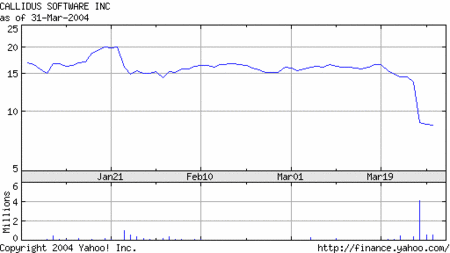There have been a number of IPO fillings recently, but the one that intrigues me most is the filing by Lindows. As many of you have read, Lindows/Linspire just filed an S-1 to raise $57 million in an IPO. WR Hambrecht is the lead underwriter and will utilize its dutch auction methodology to raise money from individual investors. In my mind, what happens with Lindows will be a barometer of the psyche of the individual investor. It well tell us whether or not the individual investor learned a lesson from the bubble. It will tell us whether or not speculation will run rampant again. As you know, I do find Linux on the desktop intriguing. That does not mean that I believe this is the year and that you should go public now on $2.1 million of revenue in 2003 with a net loss of $4.1 million. On top of that, of the $57 million they are raising, $10 million is going to pay off Michael Robertson, the CEO, for a line of credit he extended the company over the past couple of years. As per the filing,
The approximately $10,400,000 of net proceeds that we intend to use to repay outstanding debt obligations will be paid to Michael L. Robertson, our founder, Chairman and Chief Executive Officer, as payment in full of all remaining outstanding amounts under a revolving line of credit. Mr. Robertson has advanced us funds under the line of credit since July 2002, including advances of $5,600,000 during 2004. Amounts borrowed under this loan are used for our operating expenses. The loan bears interest at the rate of 10% simple interest per year and matures on June 30, 2005.
So not only is this a speculative offering, but also one where the largest shareholder gets paid back $10 million off the top. Michael did pay $4.5 million for the shares that he currently owns but 2/3 of his total capital will be off the table. So how much skin in the game will Michael really have to make this company work? Does this sound like a good investment to you? I am not opposed to the dutch auction and do believe that the methodology has a place in some deals. My big fear is that if this deal does happen, it will only confirm my belief that the individual investor never learned a lesson from the bubble. For the individual investor to forget so quickly about all of the pain and suffering we just went through really scares me.
